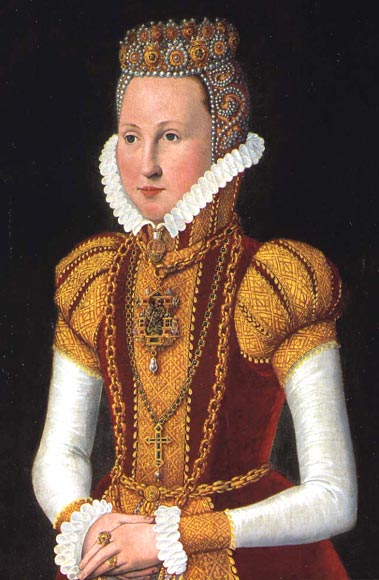© Unofficial Royalty 2023

King Peter II of Yugoslavia; Credit – Wikipedia
September 6, 1666 – Birth of Ivan V, Tsar of All Russia in Moscow, Russia
After their father’s death, Ivan and his younger half-brother Peter I (the Great) were co-rulers of Russia. From childhood, Ivan had serious physical and mental disabilities which may have been caused by Down’s Syndrome or a consequence of a disease. In 1689, 17-year-old Peter overthrew his elder half-sister Sophia Alexeievna who was ruling as Regent. Peter I and Ivan V continued as co-rulers. With Ivan being both incapable and disinterested, Peter functioned as though he were the only Tsar and eventually Ivan became a non-entity in the Russian court. For the last decade of his life, Ivan spent his days with his wife fasting and praying and was completely overshadowed by Peter.
Unofficial Royalty: Ivan V of Russia, Tsar of All Russia
September 6, 1804 – Birth of Marie Friederike of Hesse-Kassel, Duchess of Saxe-Meiningen, wife of Bernhard II, Duke of Saxe-Meiningen, in Kassel, Electorate of Hesse, now in Hesse, Germany
Full name: Marie Frederica Wilhelmina
Marie Friederike was Duchess of Saxe-Meiningen from her marriage until her husband was forced to abdicate in favor of his son, in 1866 following the defeat of Austria, who he supported, in the Austro-Prussian War. The couple took up residence at the Great Palace in Meiningen, where they would live for the rest of their lives.
Unofficial Royalty: Marie Friederike of Hesse-Kassel, Duchess of Saxe-Meiningen
September 6, 1854 – Death of Maria Antonovna Naryshkina, mistress of Alexander I, Emperor of All Russia, in Starnberg, Kingdom of Bavaria, now in the German state of Bavaria; buried in the Alter Südfriedhof (Old South Cemetery) in Munich, Kingdom of Bavaria, now in the German state of Bavaria
Maria, her mother, and her siblings were brought to Russia by Catherine II (the Great), Empress of All Russia after Maria’s father was hanged by an angry mob in Poland for his support of Russia. Maria was made a maid of honor at the Russian court and Catherine the Great arranged a marriage for her. Maria was known for her dazzling beauty and she attracted the attention of Tsesarevich Alexander Pavlovich, the future Alexander I, Emperor of All Russia. Maria and Alexander’s affair lasted for nearly nineteen years. In 1815, Maria accompanied Alexander I, Emperor of All Russia to the Congress of Vienna, which caused a scandal. Eventually, Maria began to worry about her position and the gossip that surrounded her and Alexander began to have pangs of guilt about the long-term affair. In 1818, the affair ended and Alexander went back to his wife but he continued to talk about Maria as his family.
Unofficial Royalty: Maria Antonovna Naryshkina, mistress of Alexander I, Emperor of All Russia
September 6, 1860 – Death of Georg, Grand Duke of Mecklenburg-Strelitz in Neustrelitz, Grand Duchy of Mecklenburg-Strelitz, now in Mecklenburg-Vorpommern, Germany; buried in the New Crypt at the Johanniterkirche in Mirow, Grand Duchy of Mecklenburg-Strelitz, now in Mecklenburg-Vorpommern, Germany
Georg became Grand Duke in 1816, upon his father’s death and a long reign of nearly 54 years. Georg found Mecklenburg-Strelitz in great debt and in need of much rebuilding. To eliminate much of the debt, he sold several towns to Prussia, towns that had been given to the Grand Duchy at the Congress of Vienna. He abolished serfdom and throughout his reign, he worked to raise the standards of education, building schools and instituting compulsory education. He made vast improvements to the infrastructure which would help to energize the grand duchy’s economy.
Unofficial Royalty: Georg, Grand Duke of Mecklenburg-Strelitz
September 6, 1920 – Death of Grand Duchess Maria Pavlovna of Russia, wife of Grand Duke Vladimir Alexandrovich of Russia, born Marie of Mecklenburg-Schwerin, at her villa (now the Hotel La Souveraine) in Contrexéville, France; buried in Chapel of St. Vladimir and St. Mary Magdalene in Contrexéville, France
Maria was one of the Romanovs who escaped Russia after the Russian Revolution. However, she was hesitant to leave because she still hoped that her own eldest son Kirill would one day be Emperor of All Russia. On February 13, 1920, Maria Pavlovna, her son Andrei, his mistress the famous ballerina Matilde Kschessinska, and her son Vladimir boarded an Italian ship in the direction of Venice, Italy. They made their way from Venice to Switzerland and then to France, where Maria Pavlovna’s health failed and she died six months later. Maria Pavlovna had a passion for jewelry and her collection was renowned. She was one of the few members of the Romanov family who managed to get her jewelry out of Russia. British art dealer and diplomatic courier Albert Stopford, a family friend, rescued the jewelry from her Vladimir Palace safe and smuggled the jewels out of Russia to England. After Maria Pavlovna’s death, the jewelry was sold by her children to support their lives in exile.
Unofficial Royalty: Marie of Mecklenburg-Schwerin, Grand Duchess Maria Pavlovna of Russia
September 6, 1923 – Birth of Peter II, the last King of Yugoslavia in Belgrade, Yugoslavia, now in Serbia
After the assassination of his father King Alexander I in 1934, 11-year-old Peter ascended the throne of Yugoslavia. In 1941, Yugoslavia was occupied by Nazi forces, and the government was forced to surrender. King Peter went into exile with the government. After settling in London, Peter married Princess Alexandra of Greece, the daughter of King Alexander I of Greece, and the couple had one son. In 1944, a Communist government was established in Yugoslavia. The following year, the monarchy was officially abolished. After World War II, Peter and Alexandra left London, living in France and Switzerland before settling in the United States in 1949. The marriage suffered from the strain of Peter’s numerous affairs and the constant struggle to find sources of income. Eventually, they went their separate ways. Peter settled permanently in the United States while Alexandra took her son and moved to Venice with her mother.
Unofficial Royalty: King Peter II of Yugoslavia
September 6, 1924 – Death of Archduchess Marie Valerie of Austria, daughter of Franz Joseph I, Emperor of Austria, at Schloss Wallsee in Sindelburg, Austria; buried in the Habsburg crypt behind the high altar at the parish church in Sindelburg, Austria
Valerie was the youngest of the four children of Franz Joseph, Emperor of Austria and his wife Elisabeth of Bavaria (Sisi). In 1890, she married Archduke Franz Salvator of Austria-Tuscany and the couple had ten children. Valerie’s father Emperor Franz Joseph died in 1916, in the middle of World War I. As he had no son to succeed him (his only son Rudolf had died in a suicide pact with his mistress), his great-nephew succeeded him as Emperor Karl I of Austria, but only reigned for two years as the monarchy was abolished at the end of World War I. Valerie officially recognized the end of the Habsburg monarchy and signed documents renouncing all rights for herself and her descendants. This allowed her to remain in Austria and keep her home and possessions. In 1924, Valerie was diagnosed with lymphoma. Surrounded by her family, Valerie died at her home Schloss Wallsee at the age of 56.
Unofficial Royalty: Archduchess Marie Valerie of Austria, Princess of Tuscany
September 6, 1926 – Birth of Claus von Amsberg, Prince Claus of the Netherlands, husband of Queen Beatrix of the Netherlands, at the family estate, Haus Dötzingen, near Hitzacker, Germany
Full name: Claus-Georg Wilhelm Otto Friedrich Gerd
On New Year’s Eve in 1962, Claus met Princess Beatrix of the Netherlands, the heir to the Dutch throne, at a party with friends in Bad Driburg, Germany. The couple met again at the wedding eve party of Princess Tatjana of Sayn-Wittgenstein-Berleburg and Moritz, Landgrave of Hesse, in June of 1964. Prince Richard of Sayn-Wittgenstein-Berleburg acted as a go-between for the couple and did much to strengthen their relationship. The fact that he was a German national, had been a member of the Hitler Youth, and had served in the German army, caused great controversy among the Dutch people. Only after historian Loe de Jong had established that Claus was not to blame for any war crimes, was the marriage approved. Claus and Beatrix were married on March 10, 1966, at the Westerkerk, a large church In Amsterdam, the Netherlands, just down the street from the building where Dutch Jewish teenager Anne Frank hid during World War II. The ride to and from the church was disrupted by riots with smoke bombs and firecrackers. According to some newspapers, there were about a thousand rioters chanting “revolution” and “Claus get out”. Claus was granted the style and titles His Royal Highness Prince Claus of the Netherlands, Jonkheer van Amsberg. Over the years, Claus became accepted by the Dutch public, and during the last part of his life, he was considered the most popular member of the Dutch Royal Family.
Unofficial Royalty: Prince Claus of the Netherlands
September 6, 2006 – Birth of Prince Hisahito of Japan, son of Crown Prince Akishino of Japan, at Aiiku Hospital in Tokyo, Japan
Prince Hisahito is second in the line of succession after his father. After the birth of his cousin Princess Aiko in 2001, the only child of Emperor Naruhito, there was much discussion about changing the laws to absolute primogeniture, whereby the oldest surviving child without regard to gender inherits the throne. Currently, there is male-line, male-only succession in Japan. In 2005, the Prime Minister vowed to submit a bill to the government to change The Imperial Household Law, based on recommendations from an independent, government-appointed panel. However, the birth of Prince Hisahito seems to have ended the efforts, and the proposal was dropped. In November 2020, it was recommended that the discussion regarding succession be shelved until Prince Hisahito becomes an adult and has children. It is highly probable that there will not be another person in the line of succession until Prince Hisahito marries and has a son.
Unofficial Royalty: Prince Hisahito of Japan
Unofficial Royalty: Japanese Succession Crisis
This article is the intellectual property of Unofficial Royalty and is NOT TO BE COPIED, EDITED, OR POSTED IN ANY FORM ON ANOTHER WEBSITE under any circumstances. It is permissible to use a link that directs to Unofficial Royalty.














